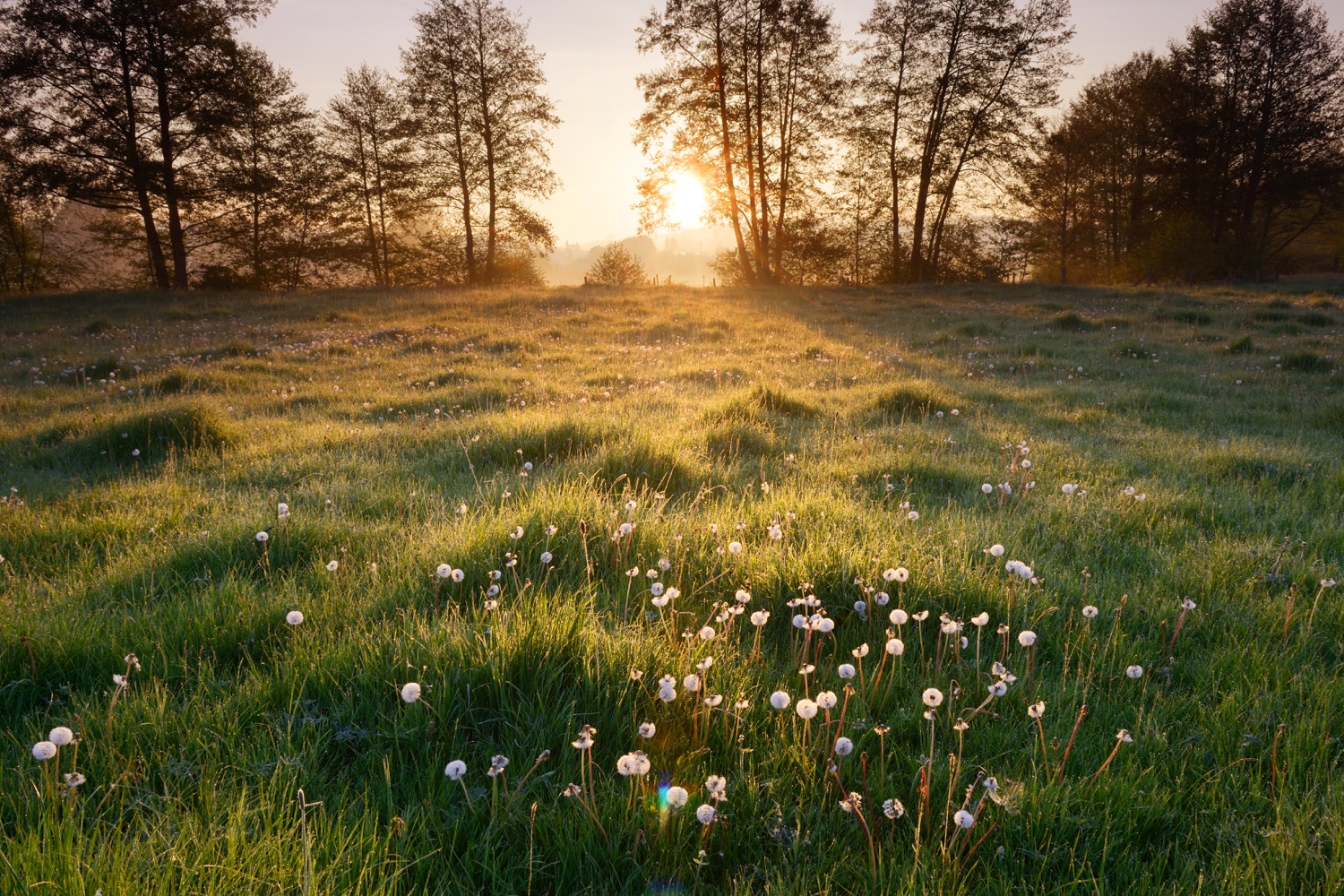
The Calvados Trio with their
Terroirs & Appellations
There are three AOCs for Calvados that share important similarities but also some significant differences in their typical character.
The Normandy terroirs
In Normandy and a few neighbouring departments, the terroir has always benefited from an oceanic climate and a type of soil that is ideal for orchards.
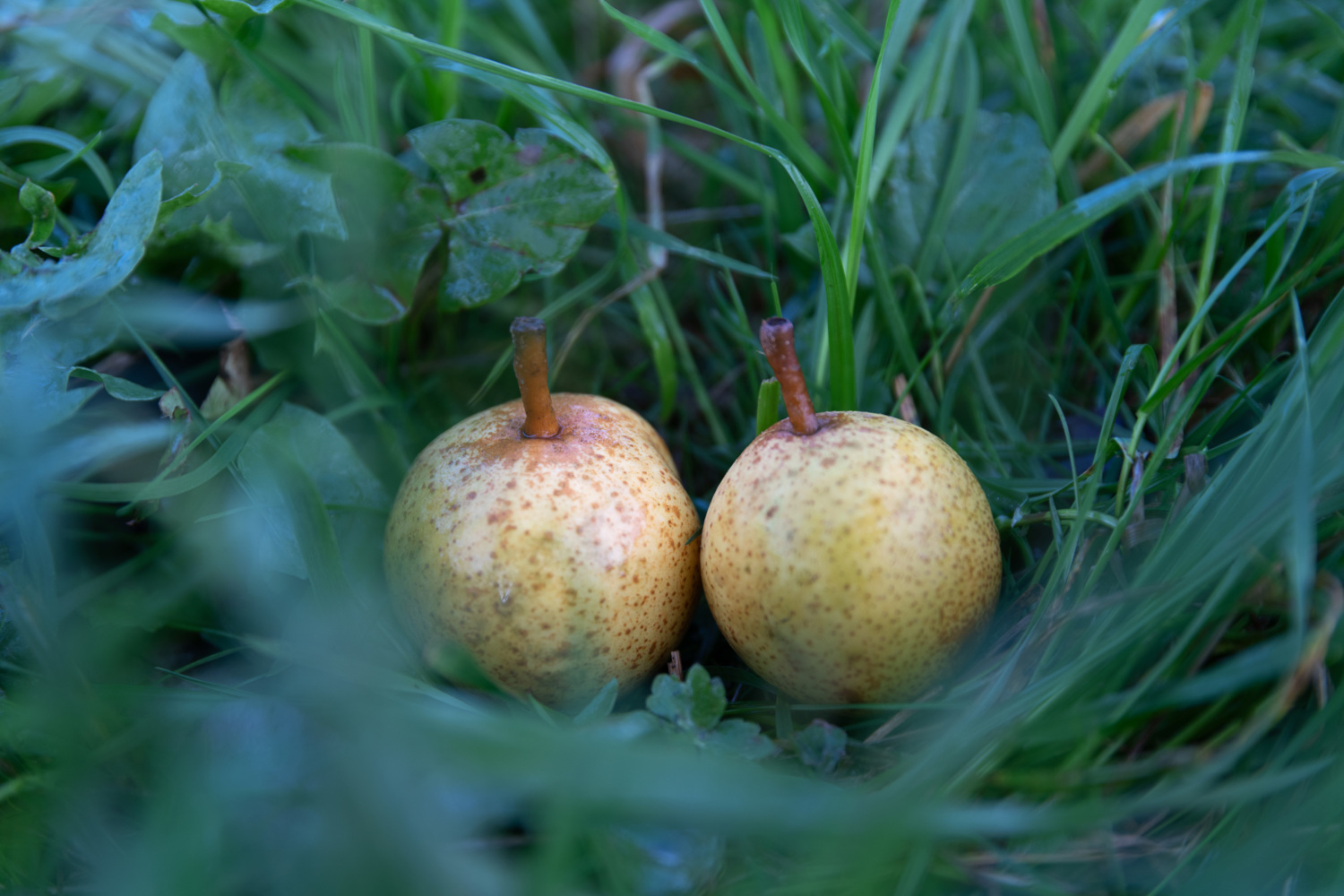
Formerly divided into “Appellations d’Origine Réglementée”, there are now three Appellations d’Origine Contrôlée (AOC) for Calvados.
The orchards used for its production extend over 8,000 hectares and includes 230 varieties of cider apples and 139 varieties of perry pears selected for their high polyphenol content and agronomic qualities.
Three appellation areas have been demarcated by the Institut National des Appellations d’Origine (INAO). All the operations involved in the production of the spirit must be carried out within each of these geographical areas: harvesting of the apples and pears, cider and perry making and distillation, and the ageing of the eau-de-vies. A series of analytical and organoleptic controls accompany the different stages of the production of the three Calvados appellations.
The Calvados AOC
The appellation area for Calvados covers a large part of Lower Normandy and a fraction of the neighbouring departments: Eure, Seine-Maritime, Mayenne, Sarthe and Oise.
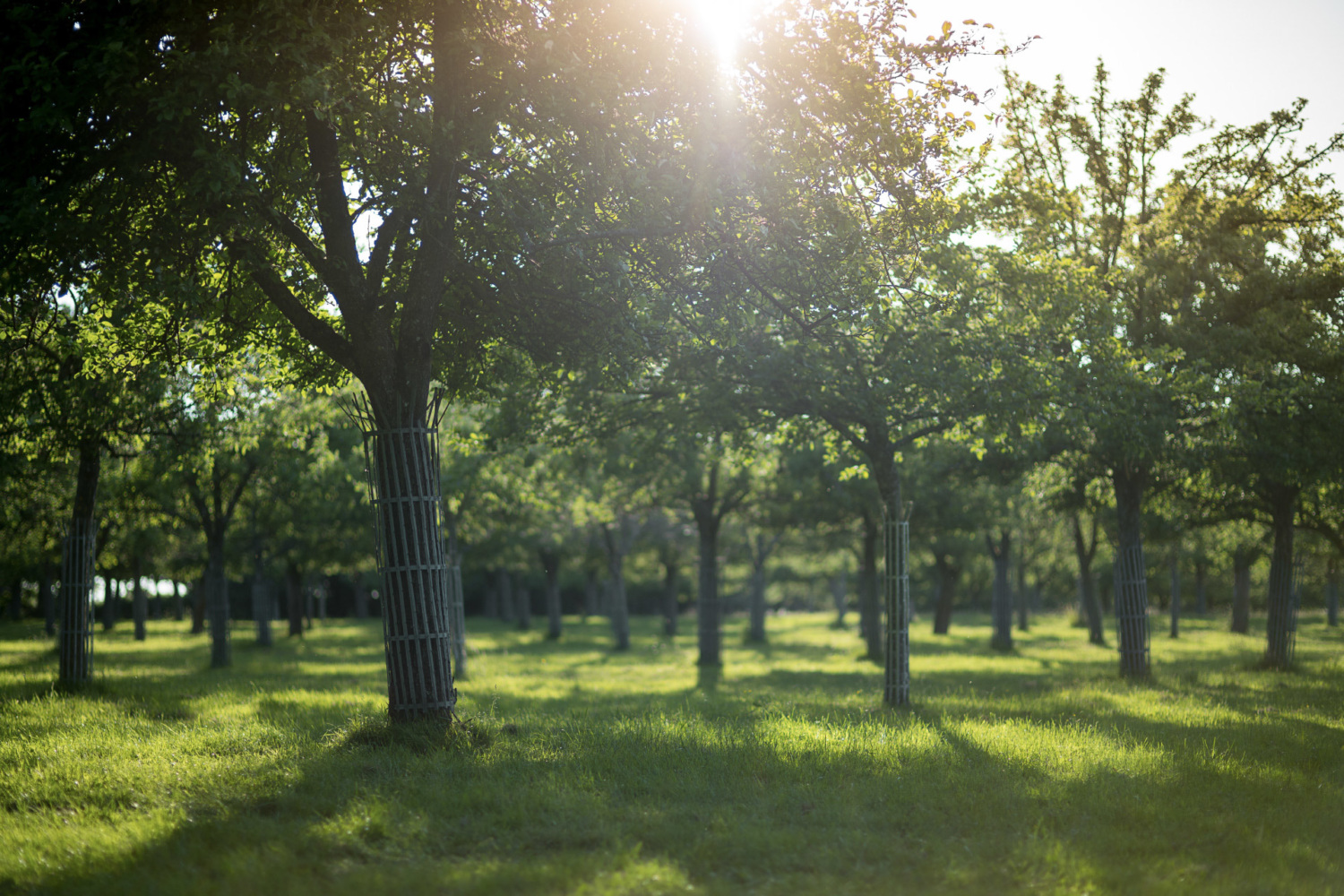
This area has an oceanic-type climate characterised by fairly small variations in temperature and abundant and regular rainfall.
The apple and pear orchards can be grown as high or low stem orchards
High stem: the orchards have a maximum density of 280 trees per hectare with a minimum spacing of 5 metres between trees. The maximum average yield of these orchards is 25 tonnes per hectare.
Low stem: the orchards have a density of more than 280 trees per hectare and less than or equal to 1,000 trees per hectare with an average yield of 35 tonnes per hectare.
At least 35% of the fruit used to make Calvados comes from high stem orchards.
There is no mandatory method of distillation for Calvados, but it is mainly produced by column still (continuous distillation).
The Calvados Pays d’Auge AOC
The Calvados Pays d’Auge appellation area extends over the eastern part of the Calvados department and also includes a few neighbouring communes in the Orne and Eure departments.

The most common soils are shallow clay-limestone lying on slopes and the oceanic climate maintains a low range of temperatures.
At least 45% of the fruit used to make the Calvados comes from high stem orchards.
The ciders for distillation contain a maximum of 30% perry pears. The use of a pot still is mandatory.
The Calvados Domfrontais AOC
The Domfrontais region is situated in the southern part of the Normandy bocage and extends over communes mainly in the Manche, Orne and Mayenne departments.
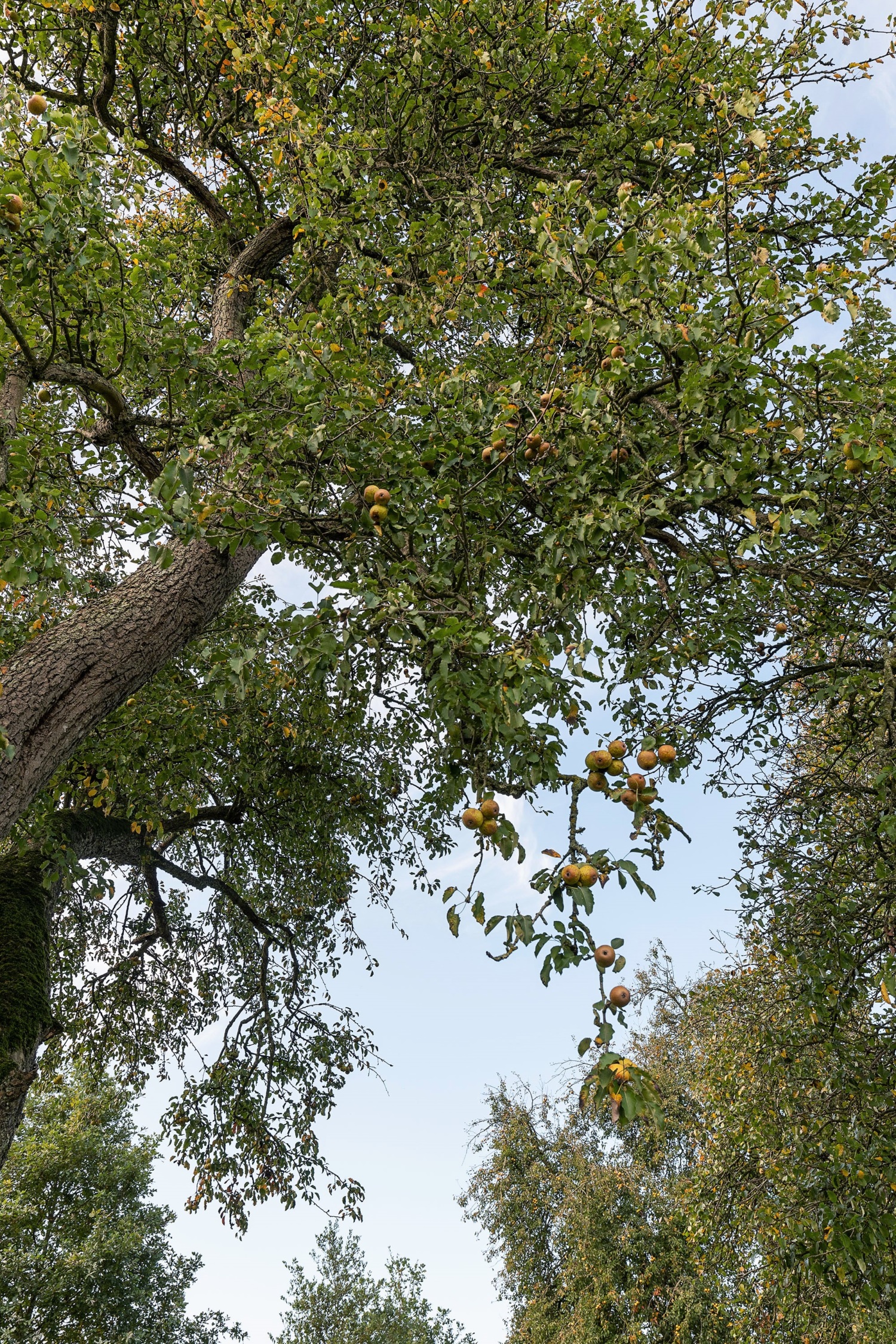
The Domfrontais region is situated in the southern part of the Normandy bocage and extends over communes mainly in the Manche, Orne and Mayenne departments. The main feature of this region is the high proportion of perry pear trees grown in high stem orchards. These trees that are open to the wind can grow to a considerable size (15m in height) and they give this region an identity unlike any other in France.
The climate in this area is oceanic, characterised by fairly low variations in temperature and mainly westerly winds.
High stem trees represent at least 80% of the orchard’s planted area and the proportion of pear trees planted must be greater than or equal to 25% of the total area of the orchards on the farm.
The high stem orchards have less than 250 apple trees per hectare, less than 150 pear trees per hectare and a minimum spacing of 6 metres between the trees. The maximum average yield is 25 tonnes per hectare.
Low stem orchards have less than 1,000 trees per hectare with an average yield of 30 tonnes per hectare.
Calvados Domfrontais is obtained by a simple continuous distillation using a column still. It is aged for at least three years in oak barrels before being released for sale.
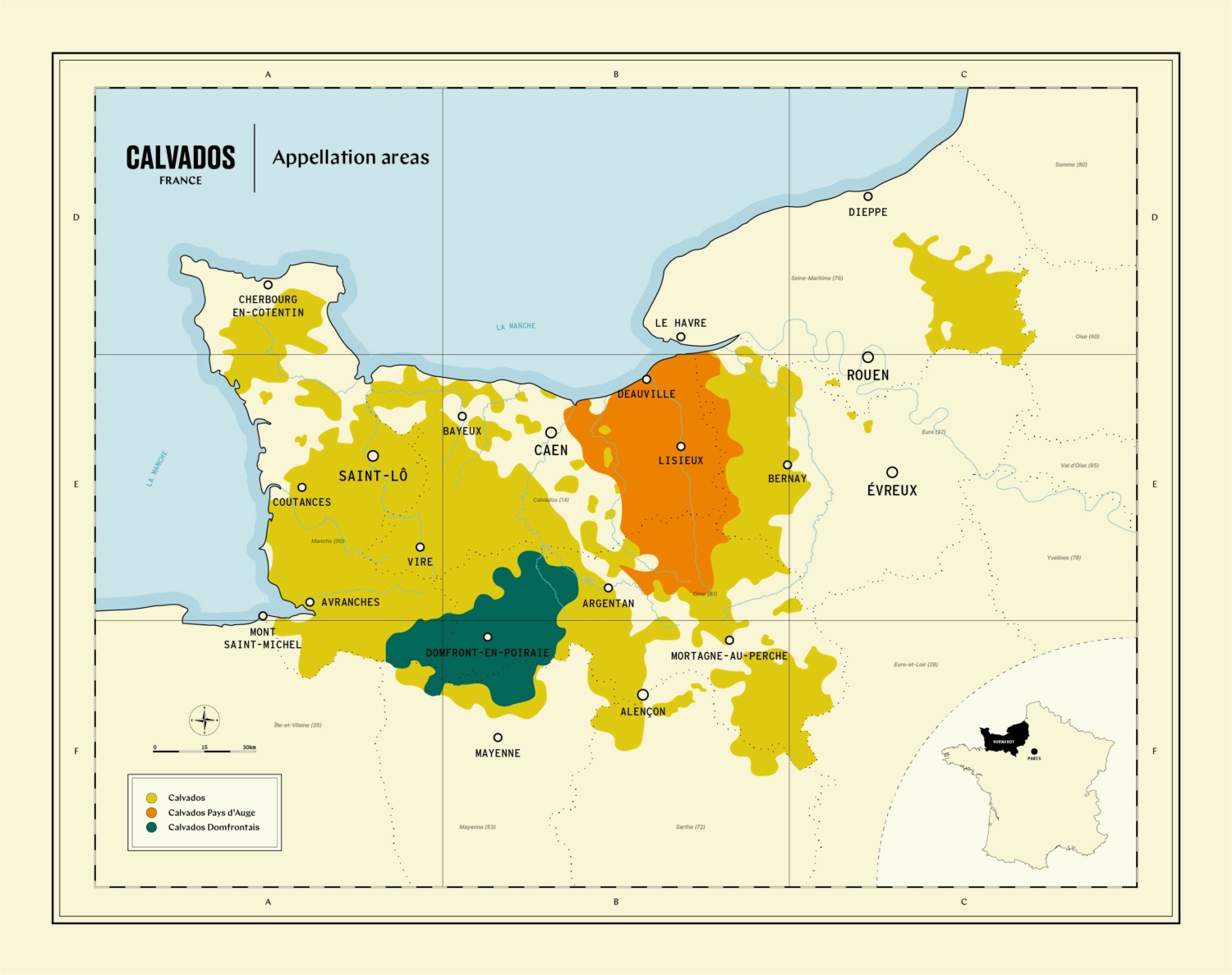
How many apples does it take to make one litre of Calvados?
It is estimated that about 18kg of apples are needed to obtain 13 litres of cider at 5% vol. ready for distillation into Calvados. These 13 litres will produce 1 litre of Calvados at 70%, i.e. before its ageing and reduction.



